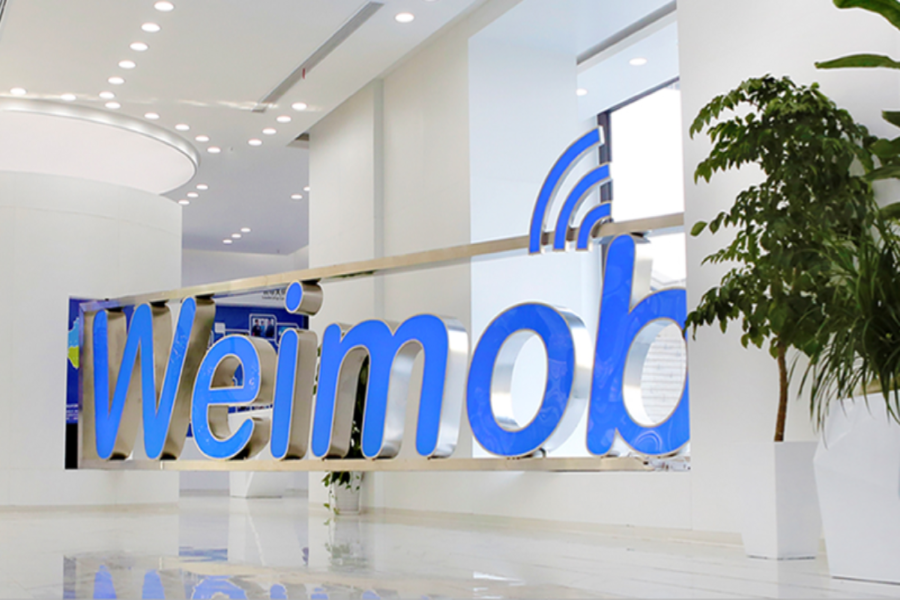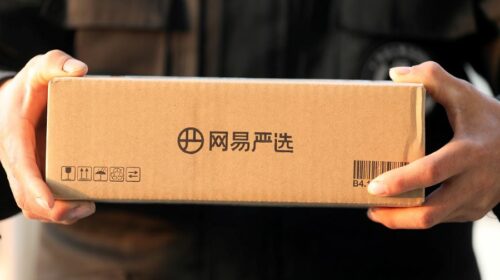Weimob Invests for the Future, as Investors Grow Impatient for Profits

E-commerce SaaS company closely tied to WeChat spent heavily on new initiatives last year, pushing it deeply into the red
Key Takeaways:
- Weimob reported a 566 million yuan adjusted loss for 2021, reversing a profit from the previous year, as it spent heavily on new initiatives
- Big-name investors sold down their stakes in the company in the second half of last year, but are showing early signs of returning
By Doug Young
Seasoned stock buyers will tell you to look for companies that are investing in their future. While that fundamental certainly holds true, an even more basic rule says to look for companies with steady and growing profits.
Therein lies the dilemma that has investors conflicted over Weimob Inc. (2013.HK), the e-commerce software as a service (SaaS) provider closely tied to Tencent’s popular WeChat social networking platform. Weimob has just released its annual financial report for 2021, which shows its revenue grew at a quite respectable 44.5% for the year. But its costs grew much faster, plunging the company into the red.
The deepening sea of red ink didn’t seem to scare off investors, with Weimob’s stock jumping 18% in early Tuesday trade after release of the latest earnings report the previous evening. But even if the rally holds, the stock has still lost more than two-thirds of its value over the last 52 weeks. Clearly investors are getting impatient for this company to post a profit.
Weimob currently trades at a price-to-sales (P/S) ratio of 3.4 based on its revenue for last year, which looks good until one considers the figure was more than double that level as recently as last October. By comparison, U.S. peer Salesforce (CRM.US) trades more than twice as high with a P/S of 7.8; though domestic rival Baozun (BZUN.US), which is closely tied to e-commerce giant Alibaba (BABA.US; 9988.HK), trades at a lowly P/S of 0.4.
So clearly investors still prefer Weimob’s heavy-spending, high revenue growth model to Baozun, which has far lower revenue growth but at greater profitability.
Weimob was founded in 2013, just as WeChat was starting its meteoric rise. It started out selling customer relationship management (CRM) software to small and medium-sized merchants using WeChat to reach their customers. In 2016, it added digital marketing tools to help merchants acquire and retain customers.
Its latest report shows it has continued investing heavily for its future, which includes diversification of its core SaaS products onto more platforms beyond WeChat and also a move into new geographic areas. Its growing stable of platforms for e-commerce merchants using its services includes the likes of social networking site Xiaohongshu as well as leading short video sites Douyin and Kuaishou.
Earlier this month the company also launched its new operating system, called WOS, which it says marks its “strategic transformation from a SaaS tool manufacturer to a platform-based and ecosystem enterprise.” Yet another interesting initiative is its ShopExpress, an SaaS product for cross-border e-commerce launched last year. That service has already signed up more than 1,000 partner merchants, and its business partners include payment specialists PayPal and Stripe and shipment tracking specialists 4PX and Aftership.
But such initiatives need money, which resulted in soaring costs for the company last year. Weimob reported its selling and distribution expenses soared by 87% in 2021, while its general and administrative expenses more than tripled. Those two items combined were equal to a whopping 94% of the company’s revenue last year, which was far higher than 2020, when they accounted for 64%.
Evasive profits
Those soaring costs pushed Weimob deeply into the red last year. The company posted an adjusted net loss, which excludes non-cash items like stock-based employee incentives, of 566 million yuan for 2021, reversing a 107.5 million adjusted profit in 2020. What’s more, the losses accelerated in the second half of the year to 477.2 million yuan from a 118.8 million yuan loss in the first half of the year.
Revenue grew 36.4% for the year to 2.7 billion yuan, which would normally look quite healthy except for the fact that the rate was far slower than rising costs. And in another worrisome trend, the revenue growth actually slowed to 28.8% in the second half of the year from 44.5% in the first half.
At least part of the slowdown looks tied to Weimob’s greater focus on its most-lucrative customers, typically big merchants who spend more on its services. The number of paying merchants for its software solutions rose by just 5% for the year to 102,813. But average revenue per user (ARPU) rose by 57.7% to 11,553 yuan, reflecting heavier spending by existing customers. As a result, the company’s subscriptions solutions revenue nearly doubled to about 1.2 billion yuan, accounting for nearly half of its total for the year.
The bottom line is that Weimob appears to be investing for its future, but that profits remain elusive nearly a decade after its founding. Investors who bought into the company’s 2019 IPO and are still holding the shares are still doing relatively well, with the stock now trading at HK$5 versus an IPO price of HK$2.70. But anyone who bought in over the last two years has lost money, including those unfortunate enough to buy shares last February when the stock crested at an all-time high of nearly HK$30.
Weimob is also somewhat unique in being one of the few companies we cover that consistently attracts big-name institutional investors. Those investors were fleeing the company last fall when its shares were sinking, but are now showing early signs of returning.
JPMorgan has boosted its stake in the company slightly to 8.3% from 7.9% last September, while Morgan Stanley has increased its holdings to 5.2% from about 5% over the same period. UBS has also boosted its stake to 6.2% from less than 5% over the same period, though we should note that the Swiss bank also holds a relatively large short position of 5.6% of the company.
Black Rock and Credit Suisse were also previously fans of the company, though both sold down their stakes to below the reportable 5% threshold at the middle of last year.
Weimob’s money-losing ways means it is rapidly burning cash, though it gave itself a nice cushion last May by raising $600 million through a convertible bond sale. Still, its cash pile dropped quite rapidly to 3.8 billion yuan by the end of last year from 4.9 billion yuan at the end of June. In that regard it does seem like cash shouldn’t be a problem for the company, as it could easily raise more funds if necessary. But investors are likely to keep growing impatient with the company if it continues to keep posting losses.
To subscribe to Bamboo Works weekly free newsletter, click here





